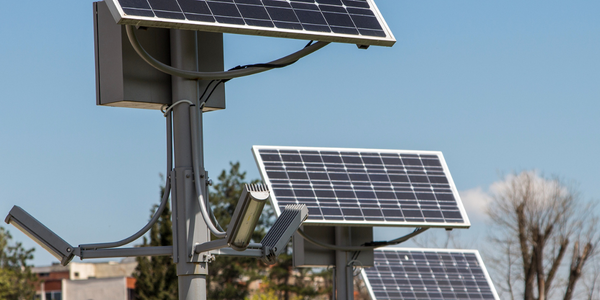技术
- 机器人 - 轮式机器人
- 传感器 - 电表
适用行业
- 海洋与航运
- 可再生能源
适用功能
- 产品研发
- 质量保证
用例
- 智慧城市供水管理
- 时间敏感网络
服务
- 系统集成
- 测试与认证
关于客户
霍克湾地区委员会是一个位于新西兰的政府组织。该委员会负责维护霍克湾地区清洁健康的环境,这项任务涉及约 175 名工作人员。这些工作人员中的许多人都是现场科学家,他们花时间在野外从不同地点收集水样。然后在实验室对这些样本进行测试,以确保该地区水道的安全。该委员会还参与社区参与活动,例如教育未来的科学家了解人类行为对环境的影响。
挑战
新西兰霍克斯湾地区委员会 (HBRC) 在确保水道安全方面面临着重大挑战。该委员会需要高效、准确地收集水质检测结果以供决策之用。该过程涉及现场科学家在一天内从不同地点收集多达 50 个样本。除了样本之外,科学家还必须管理成堆的纸质表格,这些表格常常因环境条件而变得潮湿、泥泞或丢失。然后,必须将这些表格中的数据手动输入系统,这个过程很容易出错且效率低下。该委员会此前曾尝试使用各种数据收集和管理系统将表格数字化,但这些尝试均不成功,导致效率低下且不准确。
解决方案
HBRC 采用 Nintex Forms、Nintex Workflow 和 Nintex Mobile 与 SharePoint 相结合,实现数据收集流程的数字化。该委员会在 Provoke 和 Myriad Technologies 的帮助下,将纸质数据收集系统转换为平板电脑系统。该系统将 Nintex Forms 与理事会的 SQL 数据库配对,使现场科学家能够使用 Nintex Mobile 轻松点击表格。平板电脑装在防水盒中,保护数据免受环境条件的影响。 Nintex 解决方案消除了双重数据输入的需要,从而节省了数天的处理和数据验证时间。由于 Nintex 解决方案的成功,该委员会目前正致力于将组织内所有纸质表格和流程数字化。
运营影响
数量效益

Case Study missing?
Start adding your own!
Register with your work email and create a new case study profile for your business.
相关案例.

Case Study
Remote Monitoring & Predictive Maintenance App for a Solar Energy System
The maintenance & tracking of various modules was an overhead for the customer due to the huge labor costs involved. Being an advanced solar solutions provider, they wanted to ensure early detection of issues and provide the best-in-class customer experience. Hence they wanted to automate the whole process.

Case Study
Vestas: Turning Climate into Capital with Big Data
Making wind a reliable source of energy depends greatly on the placement of the wind turbines used to produce electricity. Turbulence is a significant factor as it strains turbine components, making them more likely to fail. Vestas wanted to pinpoint the optimal location for wind turbines to maximize power generation and reduce energy costs.

Case Study
Siemens Wind Power
Wind provides clean, renewable energy. The core concept is simple: wind turbines spin blades to generate power. However, today's systems are anything but simple. Modern wind turbines have blades that sweep a 120 meter circle, cost more than 1 million dollars and generate multiple megawatts of power. Each turbine may include up to 1,000 sensors and actuators – integrating strain gages, bearing monitors and power conditioning technology. The turbine can control blade speed and power generation by altering the blade pitch and power extraction. Controlling the turbine is a sophisticated job requiring many cooperating processors closing high-speed loops and implementing intelligent monitoring and optimization algorithms. But the real challenge is integrating these turbines so that they work together. A wind farm may include hundreds of turbines. They are often installed in difficult-to-access locations at sea. The farm must implement a fundamentally and truly distributed control system. Like all power systems, the goal of the farm is to match generation to load. A farm with hundreds of turbines must optimize that load by balancing the loading and generation across a wide geography. Wind, of course, is dynamic. Almost every picture of a wind farm shows a calm sea and a setting sun. But things get challenging when a storm goes through the wind farm. In a storm, the control system must decide how to take energy out of gusts to generate constant power. It must intelligently balance load across many turbines. And a critical consideration is the loading and potential damage to a half-billion-dollar installed asset. This is no environment for a slow or undependable control system. Reliability and performance are crucial.

Case Study
Remote Monitoring and Control for a Windmill Generator
As concerns over global warming continue to grow, green technologies are becoming increasingly popular. Wind turbine companies provide an excellent alternative to burning fossil fuels by harnessing kinetic energy from the wind and converting it into electricity. A typical wind farm may include over 80 wind turbines so efficient and reliable networks to manage and control these installations are imperative. Each wind turbine includes a generator and a variety of serial components such as a water cooler, high voltage transformer, ultrasonic wind sensors, yaw gear, blade bearing, pitch cylinder, and hub controller. All of these components are controlled by a PLC and communicate with the ground host. Due to the total integration of these devices into an Ethernet network, one of our customers in the wind turbine industry needed a serial-to-Ethernet solution that can operate reliably for years without interruption.

Case Study
Temperature monitoring for vaccine fridges
Dulas wanted a way to improve the reliability of the cold chain, facilitating maintenance and ensuring fewer vaccines are spoiled. Dulas wanted an M2M solution which would enable them to record and report the temperature inside vaccine refrigerators.

Case Study
IoT Powering A New Way to Light Streets with Bifacial Solar Panels
When James Meringer’s commercial contracting business experienced a rapid increase in solar projects, he also saw an opportunity to extend the benefits of solar by using the bifacial solar panels he’d become familiar with in new ways. Bifacial solar panels enable sunlight from both sides of the panel, making it a more efficient harvest of solar power. Seeing the panel’s power, James and his team set out to use the same technology for street lighting. Until now, solar street lights have served as utilitarian solutions that force designers to choose between form and function. The Mira Bella Energy team has changed that.



